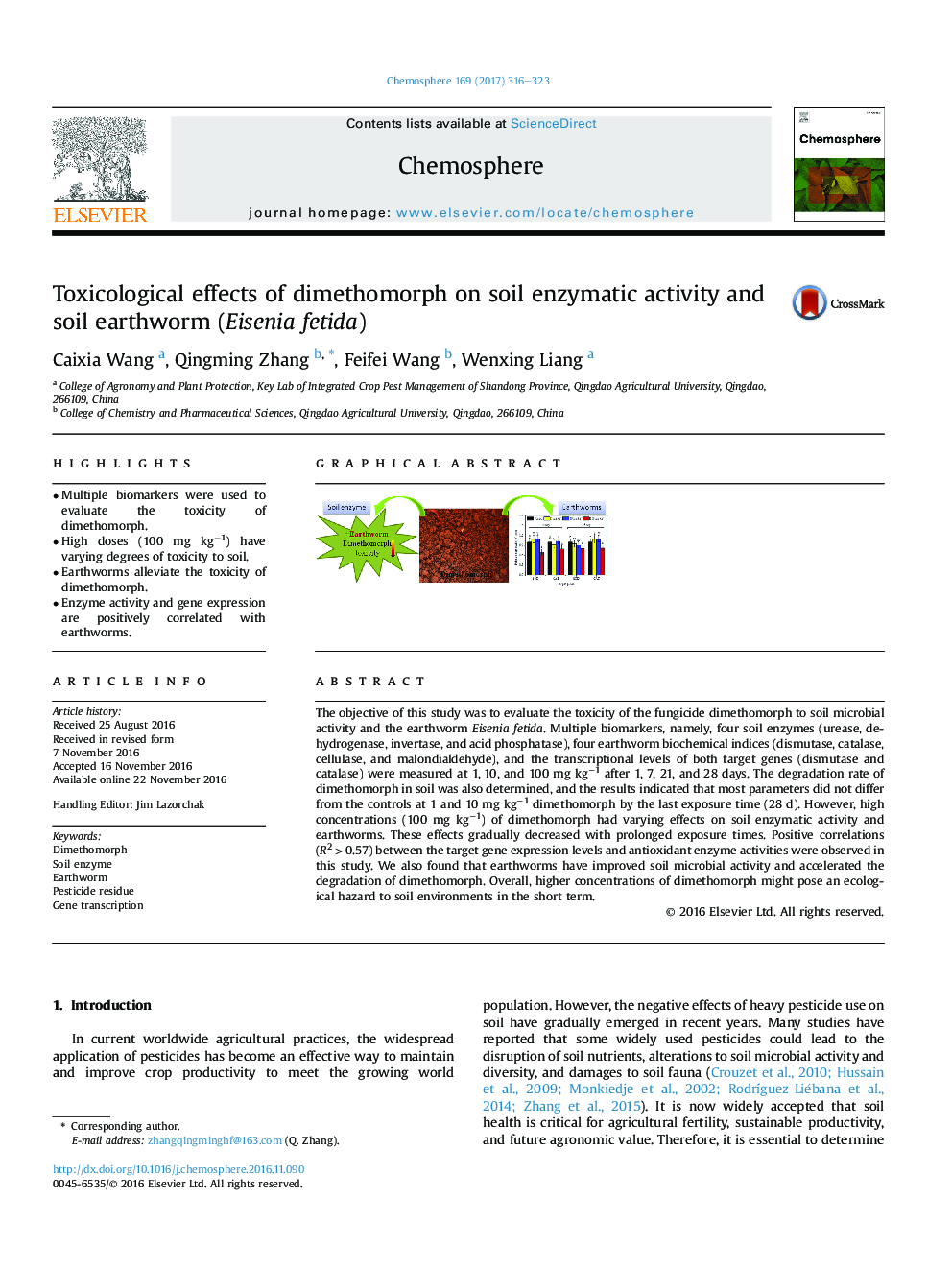| Article ID | Journal | Published Year | Pages | File Type |
|---|---|---|---|---|
| 5747017 | Chemosphere | 2017 | 8 Pages |
â¢Multiple biomarkers were used to evaluate the toxicity of dimethomorph.â¢High doses (100 mg kgâ1) have varying degrees of toxicity to soil.â¢Earthworms alleviate the toxicity of dimethomorph.â¢Enzyme activity and gene expression are positively correlated with earthworms.
The objective of this study was to evaluate the toxicity of the fungicide dimethomorph to soil microbial activity and the earthworm Eisenia fetida. Multiple biomarkers, namely, four soil enzymes (urease, dehydrogenase, invertase, and acid phosphatase), four earthworm biochemical indices (dismutase, catalase, cellulase, and malondialdehyde), and the transcriptional levels of both target genes (dismutase and catalase) were measured at 1, 10, and 100 mg kgâ1 after 1, 7, 21, and 28 days. The degradation rate of dimethomorph in soil was also determined, and the results indicated that most parameters did not differ from the controls at 1 and 10 mg kgâ1 dimethomorph by the last exposure time (28 d). However, high concentrations (100 mg kgâ1) of dimethomorph had varying effects on soil enzymatic activity and earthworms. These effects gradually decreased with prolonged exposure times. Positive correlations (R2 > 0.57) between the target gene expression levels and antioxidant enzyme activities were observed in this study. We also found that earthworms have improved soil microbial activity and accelerated the degradation of dimethomorph. Overall, higher concentrations of dimethomorph might pose an ecological hazard to soil environments in the short term.
Graphical abstractDownload high-res image (352KB)Download full-size image
